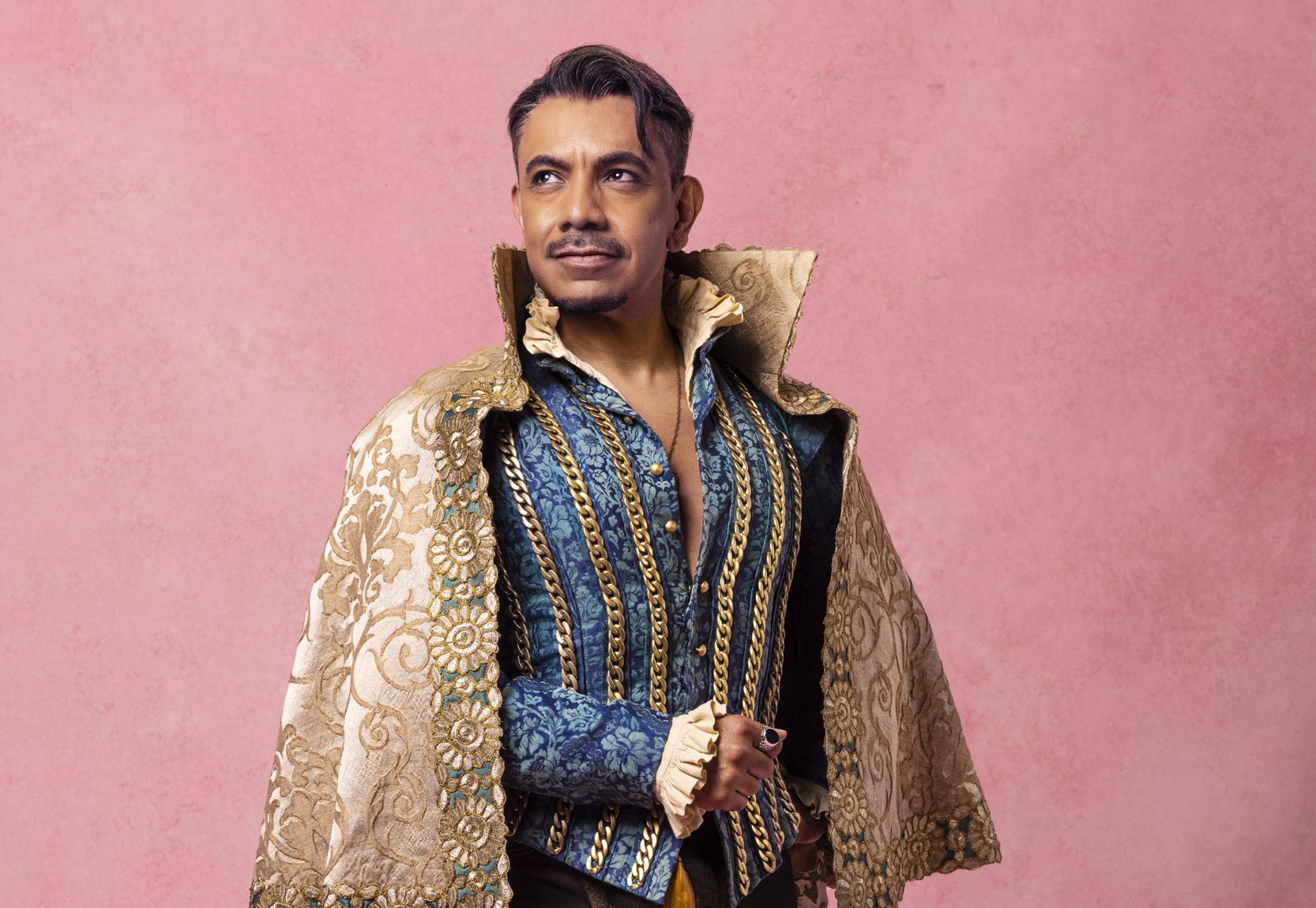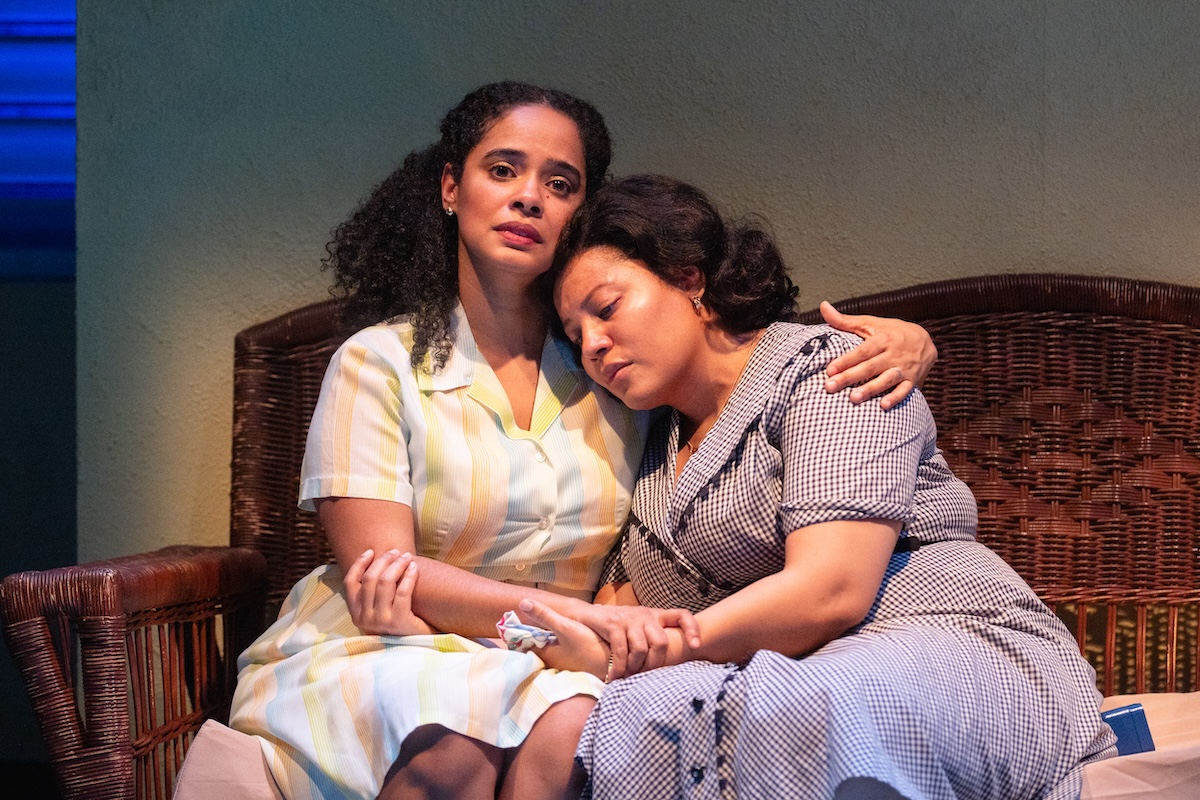The Hologram Theory

There’s been some buzz of late about Jessica Goldberg, who’s still in her 20s. She’s been so recognized during her still-young playwriting career that it would take a mighty big stick to shake at the awards and commissions she’s received. Since I hadn’t had the opportunity to vet any of her lauded output, I was looking forward to her newest work, The Hologram Theory.
Now that I’ve been exposed to it, I’m looking back in puzzlement. She’s clearly got a lot on her mind, but how it isn’t just a rehash of everyone else who’s ever despaired about society coming apart at the seams eludes me. How it is at all fresh or illuminating also escapes me.
In a literal way, it actually does illuminate–at least in the Blue Light Theater Co.’s production, for which lighting designer Ryan M. Mueller has rigged equipment not only to throw thick, blaring beams (and strobe light effects) on the stage, but also to hit the audience square in the eyes every once in a while. It’s as if the ticket-buyers have been assembled for a police grilling.
Which does follow a certain logic, since in The Hologram Theory a police inquiry is set in motion when a young woman called Patricia leaves her Trinidad home to visit New York City. Patricia is prompted to travel because she’s concerned about her twin brother, Dominic. As it happens, Patricia communicates with Dominic in her reveries, and in his most recent telepathic dispatch, he gave her disturbing news: he was dead.
To her chagrin, Patricia’s premonitions are confirmed. Dissoluting around town under the name Shango, Dominic had patronized a club called the Palace. There, he fell in with four club kids who murdered him and then, on orders from their leader, Joe Buck, chopped up his corpse and stashed it in Mylar-covered boxes. (Goldberg’s has based her work on the club-related Angel Menendez killing a few years back.) One of the kids, Julian, is so conscience-ridden that he finds himself spilling the beans about the crime to a reporter, his girlfriend Mimi’s stepsister Sara.
If there seems to be an abundance of coincidental links between the characters in The Hologram Theory, it’s no accident. They cross each other’s paths and troop into each other’s apartments–all of them, that is, except Ritah, the haranguing, Brooklyn-stuck wife of a rookie cop, Greg, who is single-handedly carrying out the search for Dominic. The remaining person in this round robin is Julian’s father, Simon, a writer who’s something of an idol to Sara, until she seduces him–or does he seduce her? He, too, gets to drop in at Sara’s crowded flat where his troubled son is crashing. The misguided friends and lovers in this tight circle don’t stop spinning until they realize what they’ve got to do: reunite Dominic’s various parts and, as a consequence, lay his spirit and theirs to rest.
[[pg]]

What Goldberg is up to is clear: explaining to anyone who hasn’t already noticed that we all exist in a disjointed (the pun is intended) world, and that we are all really connected. She’s explicit about it, too–in the Sara-Simon seduction scene, he sets out his hologram theory, about everything in a hologram being part of a whole. Our only hope for reconciliation and redemption, Goldberg suggests–and here she uses the body-rebuilding ritual for its implicit message–is in acknowledging human connection and acting on it.
Unfortunately, Goldberg’s play in the end symbolizes what she’s condemning: self-induced anomie. In a series of fragmented–almost hallucinogenic–scenes, she flails around for meaning while her characters writhe on the floor and those rotating light fixtures implicate the audience in the destructive behavior. Mimi is so undone by a fear that her body won’t obey her that she often can only rock herself rhythmically. Sara, however, is so caught up in finding a news story with which she can make her name she doesn’t even notice her stepsister’s plight. (She’s as obtuse as Patricia is astute.)
And speaking of Sara and investigative journalism, what kind of journalist is she? Apparently, she has neither affiliation nor scruples–she’s prepared to sleep with both Julian and Simon if she thinks that’ll boost her chance of a scoop. Moreover, why is Greg carrying out the investigation into Dominic’s disappearance and murder by himself? The answer to these and numerous equally baffling questions is not forthcoming.
In the overwrought contemporary melodrama, Goldberg gives the impression she’s declaiming too many profundities to be held to dramaturgical sense. She’s in good company, too, since her collaborators seem to think they must underscore her significance with loud noises and crinkly Mylar backdrops and searchlights and shiny Venetian blinds. (In addition to his work on lights, Mueller designed the tall, predominantly black-and-red set with Scott Spahr; Ray Sweeten, not living up to his name, is responsible for the original music and sound design.)
Director Ruben Polendo hasn’t controlled any of the excesses, either. It’s more like he’s encouraged his players to keep going over the top until they can wave from an orbit somewhere in outer space. For the record, those doing ensemble scenery-chewing include Kellie Overbey, Daniel Bess, Corey Stoll, Bill Torres, Elizabeth Reaser and Chris Messina, who succeeds in making Joe Buck extra-special creepy.
“There is no reason,” Sara says as The Hologram Theory begins. “No reason at all.” Perhaps she’s talking about this piece. After all, a hologram is an image that gives the impression of being three dimensional when there’s nothing there, which may be an apt description of Jessica Goldberg’s forlorn play.












